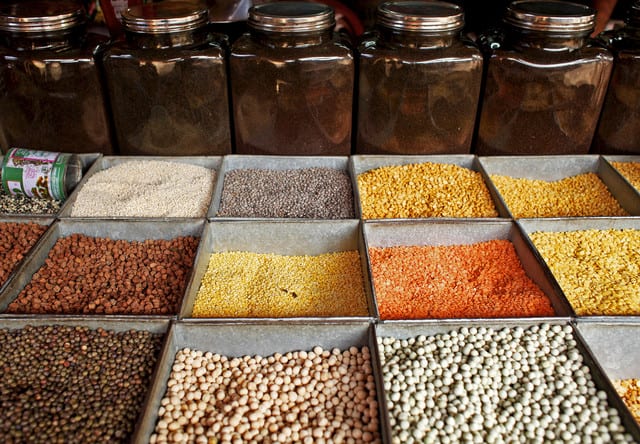Three Ways to Go for Myanmar’s Beans and Pulses Industry
In recent years, the Myanmar bean and pulses industry often suffers from the impact of import policy changes by India, the biggest buyer of Myanmar’s beans and pulses, and whose production is on the rise. Years when crop productivity is strong, India lowers import to protect local farmers, which is a reasonable move for India. However, bean and pulses growers from Myanmar, who heavily depends on the Indian market for bean and pulses export, have to bear low prices.
Thus, Myanmar authorities are trying to find a way to secure the demand for farmers such as trying to have more quota from India and finding new markets.
“India has helped Myanmar and tries to take in as much as possible in spite of the fact that the Indian crops being a large one. Going forward, I think there are three solutions,” Mr. Vatsal Lilani, the president of Overseas Agro Traders Association, told Myanmar Business Today.

The first solution, he pointed out, is to try growing different crops in case India’s demands for Myanmar’s bean and pulses drop. By growing different types of crops. The major beans and crops grown in Myanmar have more demand from Asian countries, especially from India. Therefore, Myanmar farmers should grow other types of beans and pulses that have the demand from other continents.
The second approach is shifting the industry towards protein extraction. The COVID-19 pandemic has had a profound impact on the plant-based protein market. Given the growing consumer awareness of the impact of the pandemic on meat production, consumers began adopting plant-based alternatives instead. According to the MarketsandMarkets.com, this resulted in a sales surge of over 500% for meat alternative brands. The pandemic has also influenced the sales of plant-based snacks, dairy alternatives, and supplements, as consumers move towards a healthier lifestyle.
According to the Research Institute of Organic Agriculture (FiBL), “a total of 71.5 million hectares were organically managed at the end of 2018, representing a growth of 2.9 percent or 2 million hectares compared to 2017, the largest growth ever recorded.” In 2018, 2.8 million organic producers were reported globally, and India continues to be dominant with the highest number of producers. Growth of the organic food products market is also expected to boost the growth of the organic plant-based protein ingredients market.
“The cheapest bean today is the Canadian yellow peas priced around $350 per ton whereas beans from Myanmar such as Mung beans are around $900 per ton. But in China, they are using Myanmar’s Mung beans to extract the protein in spite of the fact that the price is $900 per ton for raw material. Why? The taste of the protein is very different,” Mr. Vatsal Lilani said.
Once the protein is extracted, what is left can be used for making noodles or animal feeds.
The third path is the value addition. There are certain value additions going on in Myanmar such as cleaning, splitting, and sorting. However, the market demands more than that. So, Mr. Vatsal Lilani pointed out that Myanmar needs to do more in this area.
“We are a body of companies that are deep-pocketed and we have geographical reach globally to be able to sell the products. If the producers grow in commercial quantity, we can find the market for that. That’s no problem.”
Myanmar has earned $1.065 billion from the export of 1.438 million tons of beans and pulses as of July 24, 2020, since October 1, 2019, compared to $825 million last fiscal year.
Source: https://mmbiztoday.com/three-ways-to-go-for-myanmar-beans-and-pulses-industry/


 English
English




